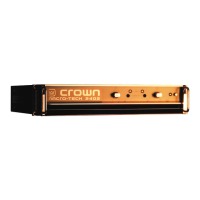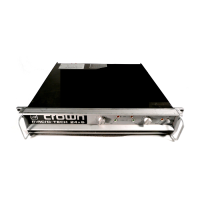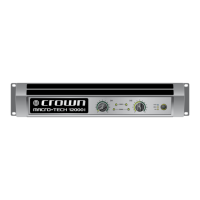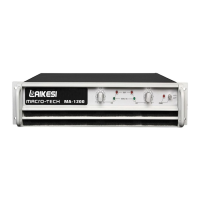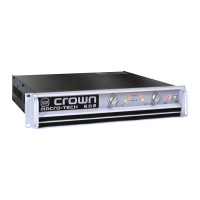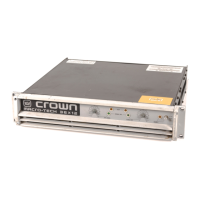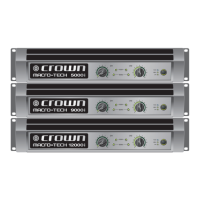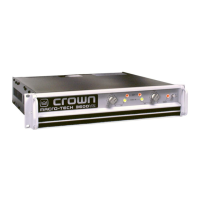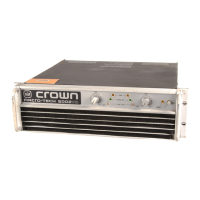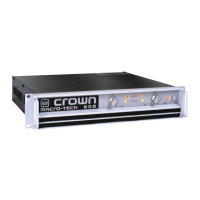Macro-Tech
®
602/1202/2402 Power Amplifiers
Page 19
Reference Manual
Another way to prevent the amplifier from prematurely
activating its protection systems and to protect induc-
tive loads from large low-frequency currents is to con-
nect a 590 to 708 µF nonpolarized capacitor and 4-ohm,
20-watt resistor in series with the amplifier’s output and
the positive (+) lead of the transformer. The circuit
shown in Figure 3.14 uses components that are avail-
able from most electronic supply stores.
3.3.6 Additional Load Protection
Macro-Tech amplifiers generate enormous power. If
your loudspeakers do not have built-in protection from
excessive power, it’s a good idea to protect them. Loud-
speakers are subject to thermal damage from sustained
overpowering and mechanical damage from large tran-
sient voltages. Special fuses can be used to protect
your loudspeakers in both cases.
Fig. 3.15 Loudspeaker Fuse Nomograph
Two different types of fuses are required for thermal pro-
tection and voltage protection. Slow-blow fuses are usu-
ally selected to protect loudspeakers from thermal
damage because they are similar to loudspeakers in
the way they respond to thermal conditions over time. In
contrast, high-speed instrument fuses like the Littlefuse
361000 series are used to protect loudspeakers from
large transient voltages. The nomograph in Figure 3.15
can be used to select the properly rated fuse for either
type of loudspeaker protection.
There are basically two approaches that can be taken
when installing fuses for loudspeaker protection. A com-
mon approach is to put a single fuse in series with the
output of each channel. This makes installation conve-
nient because there is only one fuse protecting the loads
on each output. The main disadvantage of this approach
becomes obvious if the fuse blows because none of the
loads will receive any power.
A better approach is to fuse each driver independently.
This allows you to apply the most appropriate protec-
tion for the type of driver being used. In general, low-
frequency drivers (woofers) are most susceptible to
thermal damage and high-frequency drivers (tweeters)
are usually damaged by large transient voltages. This
means that your loudspeakers will tend to have better
protection when the woofers are protected by slow-blow
fuses and high-frequency drivers are protected by high-
speed instrument fuses.
3.4 AC Power Requirements
All Macro-Tech
amplifiers are shipped with an appropri-
ate line cord. When possible, use a power receptacle
on a dedicated circuit and always make sure that it can
supply the correct voltage and current. We do not rec-
ommend operating your amplifier on voltages greater
than 10% above or below the unit’s rated voltage. For
example, if your amplifer is rated for 120 VAC, the line
voltage should not exceed 132 VAC. See Section 7 for
power requirements under a variety of conditions.
All specifications in this manual were measured using
120 VAC, 60 Hz power, unless otherwise noted. Specifi-
cations were derived using a voltage that is accurate to
within 0.5% with THD less than 1.0% under all testing
conditions. Performance variations can occur at other
AC voltages and frequencies. In addition, line regula-
tion problems directly affect the output power from the
amplifier.
